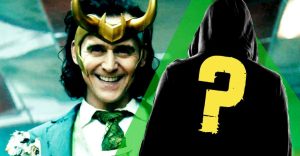Vikings: 10 Small Details That Are Surprisingly Historically Accurate

Content Warning: the following article contains depictions of violence
The hit show Vikings is a deep, engrossing odyssey based loosely on Norse culture and events circa 9th century Europe. Vikings creator Michael Hirst takes a number of creative liberties, and the show tends to be more akin to the film 300 when it comes to accuracy rather than the informative portrayal that its History Channel origins would indicate. For instance, many of the events are based on myths, figures are combined and placed in different timelines, and cultural elements and assets are inaccurate.
At the same time, Hirst and company do bring a certain richness and an eye for detail throughout that helps to color the narrative, create drama, and deepen the atmosphere. As it happens, many of these finer details—at least on some level—do accurately reflect real Viking history or culture as it’s documented.
10 Viking Funerals

While there remains no archeological proof that fallen Vikings were sent to sea in burning ships as portrayed in the series, there are aspects of the funeral rituals that seem to be accurate, according to Ancient Origins. Both historically and in the show, Vikings sought to meet their ancestors and other great warriors in the halls of Valhalla after death. As such, the warriors were to be equipped with everything they needed in this afterlife, and that included their weapons and armor.
Another parallel to the various sendoffs in the show is the Viking warships, which were required for safe passage to the great hall. Similarly, many of these ships were also set ablaze with all their contents during or before the burial. Finally, human sacrifice was often part of this ritual, as servants and slaves were sometimes sent to serve their deceased masters in Valhalla. This is given a nod during Earl Haraldson’s funeral, in which his slave girl offers to sacrifice herself and join him on the boat to Valhalla.
9 The Lack Of Horned Helmets

It’s ironically a key element that’s missing from Vikings that stands out as a historically accurate attribute. When many think of these raiders, it’s often the stereotypical horned helmet that comes to mind first due to pop-culture caricatures in films like 1961’s Erik the Conqueror and the 1958 Kirk Douglas film The Vikings.
As it turns out, though, the cartoonish helmet horns are only a myth according to ancient-origins.net. After all, it wouldn’t be too ergonomic or practical in the many major battles that Vikings portrayed in its six seasons. Though there are plenty of fictional elements in the show, this Viking trademark caricature is sensibly left out.
8 Horned Mugs

Astute viewers may have noticed certain characters sipping from peculiar horned mugs at various times throughout the show. Unlike horned helmets, this unique choice in glassware is believed to be an accurate representation of Viking culture.
Legend has it that these were used to force the swift consumption of ale, as a horned cup could not easily be set down. Though this is also likely the result of Vikings being resourceful and making use of just about whatever they could to survive. Along with antlers from hunted deer, moose, or elk—crafted horns from goats, bulls, or stone were used after being given a protective coating to shield one’s beverage from dirt or bacteria.
7 The Blood Eagle

According to William DeLong from allthatsinteresting.com, the particularly cruel means of punishment and vengeance shown a few times in Vikings was, in fact, a real ritual. The Blood Eagle was a torture method involved the cutting and rearrangement of certain body parts on the backside, which were vaguely shaped to resemble an eagle. In the show, this “procedure” is partially shown during the grim death scenes of Yarl Borg and King Aelle.
The Blood Eagle was meant as a sort of brutal death sentence among Vikings, which was typically inflicted on “honorless individuals.” Traceable evidence mostly takes the form of written accounts in this case, which could have been embellished or used as propaganda. However, the specificity of some of these very old accounts does indicate there is merit to them.
6 Much Of The Weaponry

By most accounts, Vikings tended to “rough it” when it came to their wardrobe and armor, a trait which the show doesn’t always convey. However, as revealed by en.natmus.dk, one accurate detail from the show is the weaponry, which is realistically employed in battles both large and small in scale.
For the most part, the Viking fighters aren’t seen wielding large, glistening swords, but rather, smaller blades or axes. These bigger, more glamorous objects were usually reserved for the super-wealthy. Floki’s weapons of choice are particularly accurate, as his small hatchet and hunting knife tends to be more in line with what most fighters in this time and setting would or could wield.
5 The Makeup

It’s largely agreed upon that the seemingly unique eyeliner worn by various figures in the show is accurate, as academieduello.com reveals. Known as “kohl,” the eyeliner was made from a dark-colored powder concocted from burnt almonds, lead, oxidized copper, and other ingredients. It’s worn by various characters in the show, including Lagertha and the ever eccentric Floki.
This was reportedly worn by both men and women for the purpose of dialing up the sex appeal and flashiness of the person wearing it. A bit more practically, it also served to deflect or absorb the rough sunlight glare and generally protect one’s eyesight; a sensible move considering glasses wasn’t an option a millennia ago.
4 Many Of The Hairstyles

Straying from the typical long, rugged, and unkempt hairstyles popular in historical fiction and drama, a number of characters sport unique hairdos that tend to stand out in Vikings. Various accounts, including The History Channel, describe Vikings as often having shaved heads to accommodate their snug helmets.
Additionally, many left their bangs long to compensate, often pulling them back or braiding them, while braiding their often-long beards as well. Vikings showcase various characters with these attributes with both men and women using elements of both styles. Ragnar embodies both of these, as he sports a partly shaved head and braids in the early goings of the series. Many female characters like Lagertha and Torvi don braids at various points in the show as well.
3 Ragnar’s Sons

Ironically, while their father is seemingly a collection of legends and accounts of at least two men, there is some historical accuracy regarding Rangar’s sons. It’s generally agreed among historians that the powerful sons Bjorn, Hvitserk, Ubba, Sigurd, and Ivar were all brothers and quite prominent figures. Bjorn was the eldest son, and Ivar was said to have a physical ailment from which his nickname “Boneless” originates. Furthermore, these men did lead a “Great Heathen Army” to raid and conquer various lands, gaining power and influence over the years.
2 The Lindisfarne Raid

Vikings waste no time getting into the action, as Ragnar and crew raid the shores of Northumbria and pillage the monastery early in season 1. According to sjsu.edu, the Lindisfarne raid did reportedly occur. Details are naturally sketchy by being over a millennia-old, but this was one of the key catalysts in starting the Vikings age in England, which the show accurately portrays.
In addition, at least three monks were said to have been abducted from Lindisfarne and one of them had become part of the Viking culture. According to an interview with Collider, the actor George Blagden confirmed one of those monks influenced his character Athelstan, who is captured at the raid and later joins the Vikings.
1 Ragnar’s Sunstone Used For Navigation

Despite being practiced by seafaring people, nature could be cruel indeed—and unforeseen elements like storms or dark clouds could hinder the progress and navigation of explorers. From the outset of Vikings, Ragnar wisely invests in a unique crystalline object known as a sunstone to deal with this. This object could strongly refract the sunlight and pinpoint a set location like a primitive compass. This may seem unbelievably fantastical in its design, but actually, a discovery and analysis by archaeologists and scientists reveal that this is very likely rooted in history rather than myth.
About The Author

















